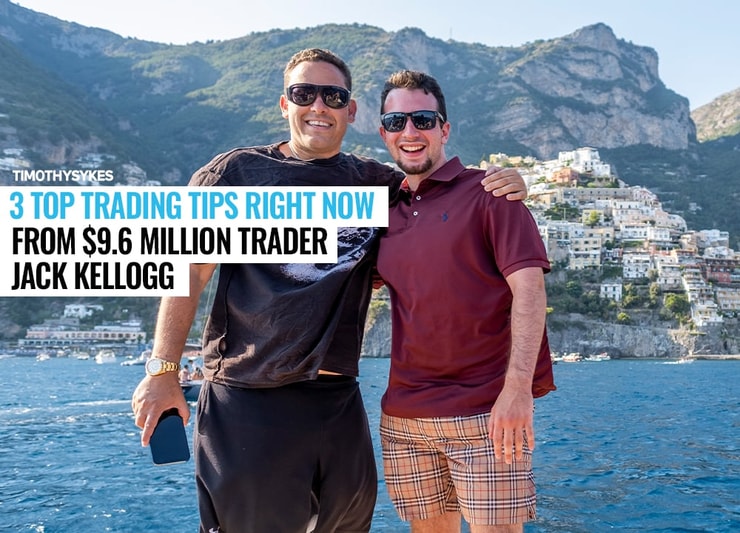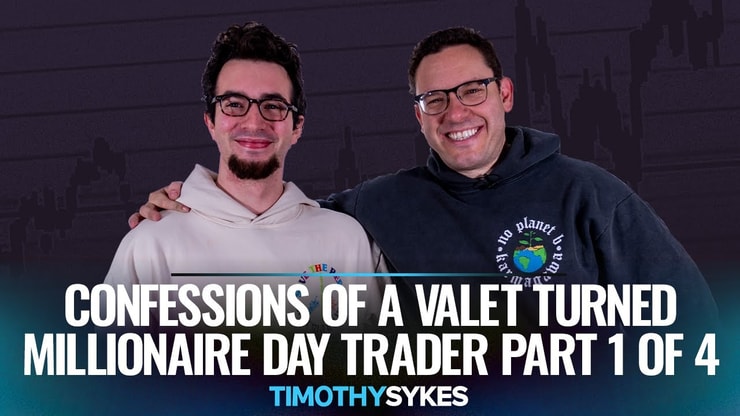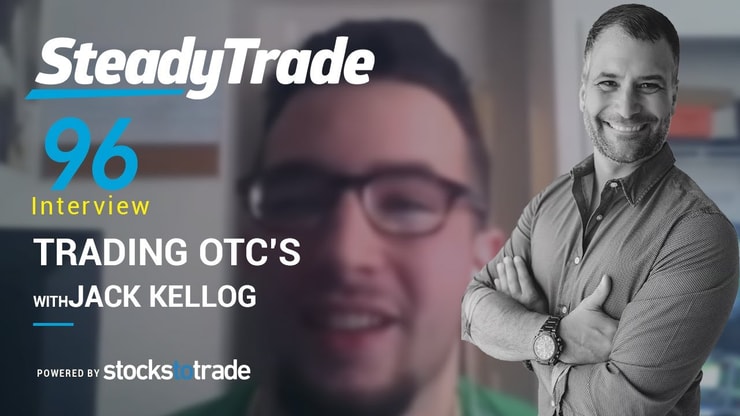The market ugliness continues in 2022 with the S&P 500 potentially gearing up to join the bear market and tech stocks continuing to take a beating.
Despite all that, my Trading Challenge student Jack Kellogg is up about $796K on the year. His total profits are over $9.6 million.
You may be wondering — what’s he doing differently? How can you learn from him?
I got in contact with Jack and asked him to share his best three pieces of advice with you right now.
Jack’s results are extraordinary, but the tips he shares are simple. In fact, you can start following this advice TODAY.
(By the way — Jack isn’t the only trader who’s crushing it in this market. You’ll be blown away once you hear Jenny Smith’s story and how this stay-at-home mother of four utilized a “secret weapon” to make nearly $200K in profits.)
Table of Contents
Don’t Know Jack?

Jack Kellogg is a Trading Challenge legend. His total trading profits are over $9.6 million — about $796K of that was so far this year. And he just turned 24 years old.
(By the way — you’ve gotta see what he did for his birthday last year. Check out this post.)
With results like that at such a young age, you might think Jack’s some kind of genius. He’s not. But his work ethic and dedication are both extraordinary.
Jack is a former valet who wanted a better life. So in 2017, he made a New Year’s resolution to start trading.
If you really want to dive deep into Jack’s story, don’t miss my videos: Confessions of a Valet Turned Millionaire Day Trader Part 1 of 4 (Also watch Part 2, Part 3, and Part 4). Here’s the first one:
Here’s the short version. When Jack found me, he was initially skeptical. But once he witnessed a penny stock supernova for himself, he was on board.
He joined the Trading Challenge and focused on paper trading at first to build up his skills. Early on, he learned an important lesson…
Self-Sufficiency Matters

As Jack watched other successful traders like Mike ‘Huddie’ Hudson, he saw a pattern…
All of my top students used my teachings to develop their own strategies.
Jack knew that if he wanted to be successful, he couldn’t just follow alerts.
After a LOT of trial and error including blowing up his account by short selling, Jack found his footing with OTCs.
With OTCs, he developed a strategy that revolved around risk/reward levels. It was a game-changer. He talks a LOT about his strategy in this episode of the SteadyTrade Podcast:
When the hot market hit in 2020 and 2021, Jack was prepared to take advantage of the opportunities out there — and to scale up.
To put it in numbers for you…
- He started 2020 at about $160K in profits.
- In the fall of 2020, he passed $1 million in trading profits.
- He’s now over $9.6 million in trading profits — about $796K of that was in the first few months of 2022.
These days, Jack goes both long and short. He still loves OTC breakouts and dip buys, but he also shorts breakdowns. He’s also dabbled in swing trading. While OTCs are still his favorite, some of his biggest wins have been on listed stocks.
Jack’s 3 Top Pieces of Advice For Traders

Here are Jack’s top three pieces of advice for traders.
1. New To Trading? Go Long.
Jack first found trading success with short selling — then he blew up his account.
While he’s more secure in his short-selling strategy today, he doesn’t advise it for newbies. It’s just too dangerous for newbies and traders with small accounts. Here’s his logic:
- “Longing is superior because you can only lose 100% of your money. With short selling, you could lose 500%.” (Or more!)
- “There are a lot more fees involved with short selling. With longing, it’s commission-free on Nasdaqs now.”
- “With longing, you have the chance to make so much more without as much risk.”
More Breaking News
- Is TeraWulf Stock Heading for Record Highs?: Breaking Down Its Recent Market Moves
- RB Global’s Upcoming Q3 Results: A Catalyst for Stock Dynamics?
- UP Fintech Holdings’ Stock Dives: What Now for Investors?
2. Trade Based on Risk and Reward
Jack doesn’t like guessing games. Instead, he likes evaluating risk versus reward.
Jack spent a LOT of time watching stocks trade before he was active in the market. This helped give him a feel for how stocks trade and how patterns play out.
It also helped him get an understanding of when a stock might fit one of his go-to patterns. Every time he enters a trade, he knows his risk versus reward ratio.
He also knows how to shift his risk level based on the price action — and how to adjust as the trade plays out.
Be sure to check out the SteadyTrade Podcast episode I referenced above — it’s older, but Jack shares a lot of specific tips for how he trades based on risk and reward.
3. Don’t Add to Losers
It’s a simple concept — if you’re in a losing trade, don’t add to your position and hope things will turn around.
But it’s easier said than done. In fact, one of Jack’s biggest losses to date was a result of breaking his own rule on Medmen Enterprises Inc. (OTCQX: MMNFF).
Jack was making a lot of money and winning a lot of the time during that point in his career. He needed a heat check.
He went too big on MMNFF. When the stock didn’t bounce right away, he averaged down — but it worked against him when he tried to cut losses intelligently.
He wanted to get out, but there wasn’t enough liquidity — so about $200,000 of that loss was slippage, just trying to get out.
How to Learn From Jack

Wanna learn more? Here’s how you can connect with Jack:
- See Jack’s Profit.ly stats here, including his$367K loss on MMNFF.
- Breakouts & Breakdowns — join Jack and other Trading Challenge millionaires Mariana and Kyle in their chat room community on on StocksToTrade
- Tim Sykes’ Trading Challenge — Jack’s a chat room moderator.
- Check out the T.W.I.S.T. podcast
What’s your favorite piece of advice from Jack? Leave a comment below — I love hearing from you!





Leave a reply